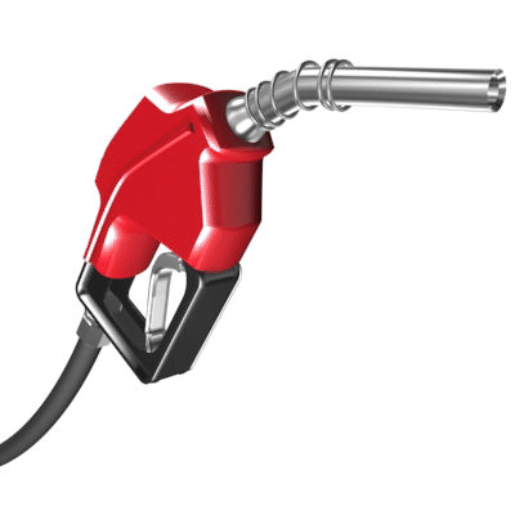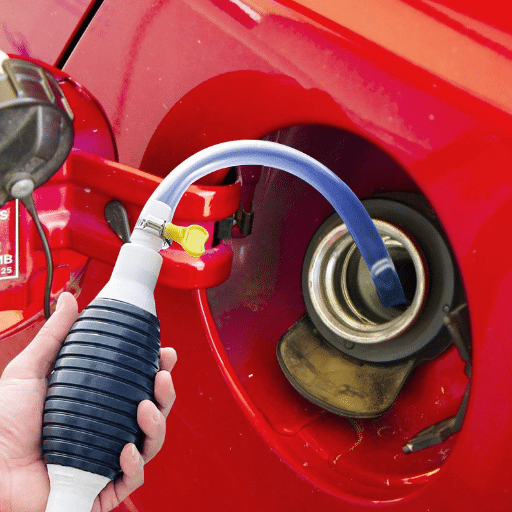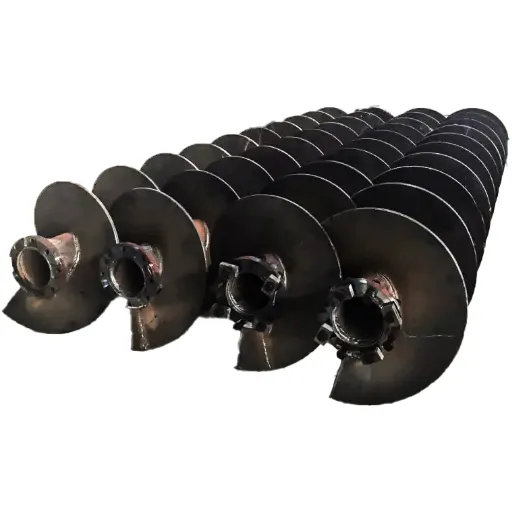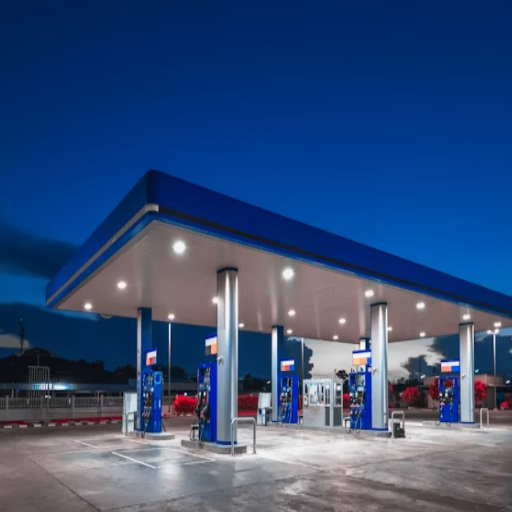Tremie concrete, in the current state of the art, seems to have been established as a paramount material in the deep foundation systems since it must be laid in difficult conditions that require utmost precision and reliability. This unique method of placing concrete underwater and sub-surface is aimed at producing uniformity, durability, and integrity of structure through a unique method of delivery. Any faulty understanding about the use of concrete, such as tremie concrete, may hinder engineers, contractors, and other construction professionals in finding a way to accomplish highly complicated projects precisely and efficiently. This article is, therefore, intended to enlighten readers on the fundamentals of tremie concrete and the various roles it plays in solving construction problems, and why it is a preferred choice for deep foundation works. This will enable readers to be familiarized with modern-day best methods, standards, and innovations underlining the correct use of tremie concrete.
What is Tremie Concrete?
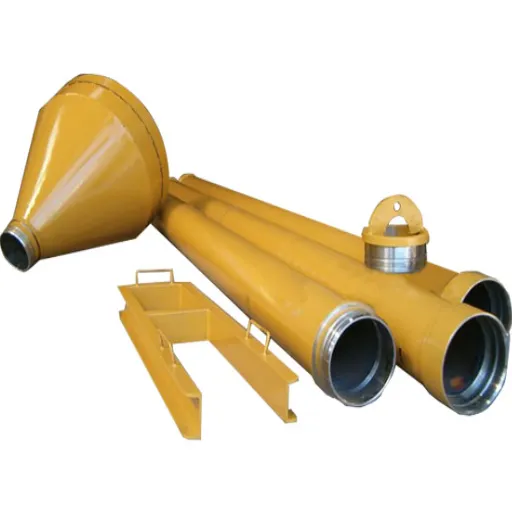
Tremie concrete is a specially designed concrete for underwater construction or conditions where concrete placement must take place under water or other fluids. The placement of the concrete is done using a tremie pipe, which is a long, vertical pipe through which the concrete is poured directly into its final position. This method helps the concrete to retain its strength, density, and integrity as contamination during placement is avoided or segregation may be minimized. It may be used for deep foundations, piers of bridges, and retaining walls.
Definition and Purpose
Tremie concrete is underwater concrete used in underwater construction. It preserves the concrete quality without loss of strength during concrete placement processes in a fluid environment. This process is particularly important wherever a conventional method of concrete placement could lead to segregation of aggregate or dilution due to water exposure. Thus, the tremie should always remain submerged during the concrete deposit process to ensure the durability and structure of the mix.
The concrete applied underwater will be placed into proper and sturdy structures, such as bridge pilings, deep foundations, cofferdams, and retaining walls. It is a crucial element in civil engineering, being wholly efficient in accomplishing homogeneous mixes in even the very adverse conditions. Admixtures and materials for concrete that have come into existence recently further make the tremie concrete workable, with less bleeding and more resistance to environmental pressures. Studies conducted have revealed that, depending on the design of the mix and its application, modern tremie concretes have the ability to attain greater than 5000 psi (34.5 MPa) in compressive strength, thereby proving that they can stand heavy loads and environmental stresses.
Components of a Tremie System
The following are a few basic components of a tremie system to place concrete underwater in a difficult environment:
Tremie Pipe
The principal functioning element of the tremie is a vertical pipe that is commonly made of steel or rigid PVC. Its diameter ranges from 150 mm to 300 mm (6 inches to 12 inches). The length of a tremie pipe has to be adequately adjusted according to the required placement depth. Extensions are sometimes attached by thread or flange. The internal diameter should be large enough to prevent the trapping of an aggregate inside the pipe within concrete. At the lower end of the pipe, there is usually an opening, while the upper end is fitted with a hopper.
Hopper
The hopper is the entry point for concrete into the tremie pipe. It is designed to enable continuous and controlled flow with minimum segregation of the concrete mix. Today, hoppers may vary widely in capacity, typically lying anywhere between 0.5 m³ and 2 m³ (0.65 cubic yards to 2.6 cubic yards), allowing for the feeding of fresh concrete at a constant rate during the operation. The conical shape of the hopper also facilitates in regulating the flow of material.
Sealing Mechanism
The sealing mechanism will be fixed at the very bottom of the tremie pipe to prevent water from entering it during the early operation. This seal will then be displaced by the pressure of the fresh concrete as soon as the pouring commences, causing a continuous flow of uncontaminated concrete. Proper sealing must be ensured to preserve mix integrity.
Buoyancy Control System
Buoyancy control systems are often utilized underwater to maintain the stability of the tremie pipe. Weights might be fastened to the pipe at its lower end, so it may not move upward against the buoyant forces. Control of the pipe’s position must be very rigorous to put the concrete uniformly.
Support Systems
Tremie systems need a crane, a derrick, or some other form of support stand on which the pipe and hopper assembly can be suspended. The support mechanism must be able to move the tremie pipe under controlled conditions so that appropriate adjustments for maintaining placement accuracy can be made. More refined support systems even offer automatic positioning control for outstanding accuracy.
Optional Pumping Devices
In some circumstances, tremie processes, though not always in the process, include some kind of concrete pump to discharge concrete straight into the hopper or pipe. This arrangement is beneficial for projects demanding large capacity and where high-speed placing is necessary.
Each one of these components undoubtedly plays an important role in ensuring the system operates satisfactorily, thus safeguarding the quality and structural integrity of the poured concrete. To maximise efficiency and minimise operational risks, the latest systems take advantage of automated flow monitors and sensors.
Applications in Construction
Tremie systems enjoy diverse applications in specialized construction activities, particularly underwater concreting, foundations, and deep shaft structures. For very precise placement of concrete in adverse situations-from bridge piers to marine structures, in secant pile walls method must guarantee that it does not allow contamination or segregation. Moreover, tremie pipes constitute one of the efficient means for diaphragm wall and basement constructions to guarantee safety during concrete placement below water or slurry levels. Emerging technologies include real-time monitoring techniques that have turned the efficient application of tremies to higher levels of precision while minimizing wastage in big works.
Process of Concrete Pouring with a Tremie
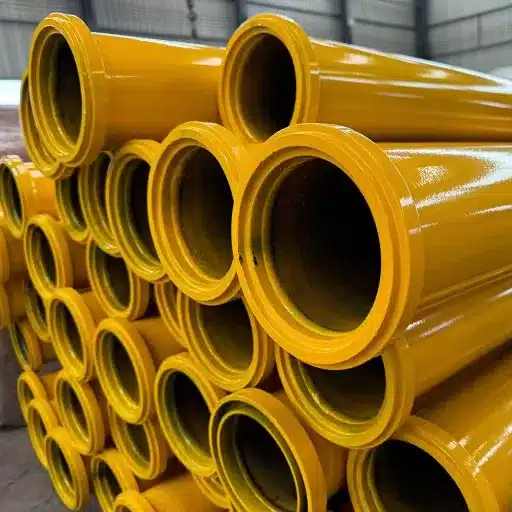
In order to pour concrete using a tremie, the first step is to assemble the tremie pipe and ensure all the connections are tight and airways are clear. Then, the pipe is lowered to the point of pouring, normally underwater or inside excavations filled with slurry. A plug or hopper initiates the procedure so the initial mix does not mingle with the surrounding fluid. Concrete enters the tremie pipe and is allowed to flow freely under control by the hopper system-continuous pressure is maintained to avoid segregation or contamination. Slowly, the pipe is lifted while always staying embedded in the placed concrete to prevent cessation of flow or formation of voids. The method assures smooth placement of concrete while safeguarding the structure in adverse environmental conditions.
Setting Up the Tremie Pipe
The correct setup of a tremie pipe is vital for ensuring proper underwater concrete placement. First, an appropriate length and diameter of the tremie pipe must be considered about the project’s specification, such as the depth or flow rate of the concrete. It shall be tight enough with the hopper carrying an uninterrupted supply of concrete. This is most important because before placing, the lower end of the tremie pipe must be enclosed, with a removable plug or ball, so water does not enter. The system is positioned at the pour location, and great care is taken to maintain the pipe’s vertical status to control the flow optimally. Upon the mixing of concrete in the hopper, the tremie pipe fills up, and the plug is released, and the concrete displaces the water. The pipe must be kept submerged in concrete throughout the process to avoid trapping air or water that might jeopardize the pour’s integrity. Thorough checks during the setup would ensure that all parts are well aligned and working efficiently so that concrete flows without interruption.
Techniques for Effective Concrete Pour
Pouring concrete continuously will have to do with the best practices that need to be followed to attain consistency and long-term durability. The substrate must always be prepared properly by removing all dust and dirt, if any; it should be treated with a bonding agent and have the correct moisture condition required of the substrate. Some may say that the determination of the mix design is the paramount step: the right ratio of cement, water, and aggregates shall be maintained, and in no case should the mix acquire too much water, as this renders the concrete weak.
Ensure continuous pouring to prevent the formation of cold joints. Vibrate the concrete until the air voids are removed, but do not over-vibrate would segregate the mix. Set the fill levels during placement, ensure even distribution in the formwork, and monitor for any issues, such as leaks or bulges, then deal with these immediately.
Environmental factors come into play. In the context of hot weather pouring, cooling methods are required to chill the concrete with water and/or an ice cube or two, whereas insulation formwork and rapid-cure additives are employed during cold-climate situations. Considering protection, provide it during the curing period: with wet burlap or plastic sheets, or with curing compounds that will retain moisture and protect it from temperature fluctuations so as to attain strength development at the fastest rate.
Managing Workability During Pour
During pouring, ensuring the desired workability is achieved and maintained guarantees concrete strength and convenient placement. Workability means the concrete’s property to be mixed, placed, and finished with ease, without segregation. It depends upon the water-cement ratio, the shape and size of aggregate, and admixtures.
Using certain additives, such as plasticizers and superplasticizers, is one way to improve workability by reducing mixing water while retaining maximum flowability. For example, superplasticizers can reduce the amount of water by approximately 20-30% from normal practice and thus can greatly increase strength without compromising workability. Plus, the selection of suitable aggregate gradation matters; a properly graded aggregate with an appropriate proportion of fine and coarse particles enhances cohesion and prevents segregation during placement.
The temperature factor is vital. If concrete remains exposed for long hours to the sun or heat, moisture tends to move away too rapidly, and slump capacity diminishes. In cold conditions, it can prevent proper hydration from forming and make the mix stiff. To lessen the aforementioned issues, temperatures of the concrete mix should ideally range between 50°F and 90°F, provided environmental conditions are favorable. To make the workability last under unpredictable weather conditions, retarding or accelerating admixtures may be incorporated.
Especially when placing concrete over large areas or in complex form works, batch uniformity is paramount-Joint mechanical vibration is necessary to consolidate the mix and expel air pockets, ensuring a homogeneous mix with improved workability. Over-vibrating must be avoided as this could lead to segregation or loss of entrained air.
After placement, good curing methods must be followed, as they mainly influence long-term durability and performance of the concrete. Setting fundamental parameters like slump and performing field tests, such as the slump cone test or flow table test, guarantees that minor changes can be applied throughout the concrete pouring to suit the project requirements.
Essential Concrete Pouring Guidelines
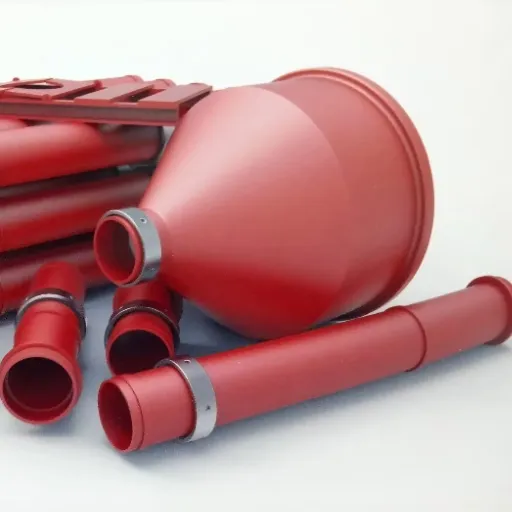
Key Steps for Successful Concrete Pouring
What are some necessary steps one should take in pouring concrete?
Some of these steps include pre-pour preparation, such as leveling the site, placing the formwork, and finishing reinforcement; concrete mixing; transportation, taking care not to segregate the mix; placing by considered methods; and finally compacting by vibration and curing for adequate durability.
How does one avoid air pockets during pouring?
Preventing air pockets during pouring is achieved when a mechanical vibrator or tamping is used for vibration, providing uniform vibration across the concreting surface and abstaining from over-vibration to avoid segregation of the concrete mix.
Importance of Curing:
Curing is applied to preserve the correct amount of moisture and temperature for proper hydration to gain strength over a long period and be durable. Common methods include wet curing, curing compounds, or covering with plastic sheets to retain moisture.
Preparing for a Concrete Pour
Preparation sets the stage for the concrete pour and is very important in ensuring the success of the operation. The preparation starts with a detailed site inspection and includes the removal of debris, grading, and the installation of the formwork, which gives shape and dimensions to the slab. This formwork has to be rigidly fixed so that it will not shift during the pour.
In accordance with the design, reinforcement such as rebars or wire mesh is laid down to impart tensile strength to the finished concrete. Next, conduction should take place to ensure all equipment and tools, such as vibrators and screeds, are available and in good working condition.
Before the concrete is poured, the mix design should be reviewed and checked to satisfy the specific requirements of the project so that the concrete will have the strength, workability, and durability required for the job. It is also suggested that the mixing apparatus itself should be calibrated, and the first batches should be checked for consistency as a control on quality.
Weather conditions must remain perfectly studied so that curing and setting times are not adversely affected. Extreme conditions of heat, cold, or even rain could mar the integrity of the concrete, so it becomes of utmost importance to take protective measures, such as erecting tents or running heaters or water misting systems.
Lastly, coordination during the pour between members is imperative in order to achieve even placement, consolidation through vibration, and a good finish. If accomplished, it can not only lessen errors but also enhance the durability of concrete construction.
Workability of Tremie Concrete
The workability of tremie concrete is essential to the placement of materials in water without segregation or loss. Hence, high workability in the admixture is mostly achieved by means of a mixture with an extremely low water-to-cement ratio, assisted by superplasticizers or water-reducing admixtures. This imparts all the necessary flowability required for work, along with its strength and durability characteristics. Segregation of the component should not be able to occur because the concrete has to be cohesive, having a stability of consistency which allows uniform flow through the tremie pipe. Resistance against washout in submerged environments will be further improved by the proper design of the mix, including a proper selection of well-graded aggregates and fines content. Workability at the desired level is chiefly a compromise between flow property and concrete structure for underwater concreting.
Monitoring the Concrete Pour Process
The procedure of concrete pouring needs to be observed accurately to facilitate the attainment of strength and durability considerations. In underwater work, it is especially so. To monitor placement efficiency and material consistency in the course of actual placement, advanced technologies such as online-time sensor systems are implemented, including pressure transducers and flow meters. These methods of monitoring gather definite parameters such as flow rate, pressure change in the tremie pipe, and entrained air to immediately adjust according to need to safeguard the pour.
An analysis by concrete temperature has always been necessary to prevent the possibility of thermal cracking. Temperatures can be monitored by embedding thermocouples in the concreting formwork. The standard ACI 304R-00 states that temperature differences in a pour should not exceed 20°F (about 11°C), else internal stresses begin to accumulate.
Visual inspection is a very critical aspect of the monitoring of the pour process, under the use of underwater cameras and ROVs. These tools allow the engineers to verify a steady flow of concrete through the tremie pipe without interruption or washout till cast on the substrate.
The data acquired during the pour can be subjected to analysis, after the operation, to point out modifications that may be effected during a subsequent project, thus refining the art with each passing project. Such integration of the more sophisticated monitoring techniques ensures that underwater concreting meets the requirements of the structural design and also improves the reliability thereof.
Advantages of Using Tremie Concrete in Deep Foundations
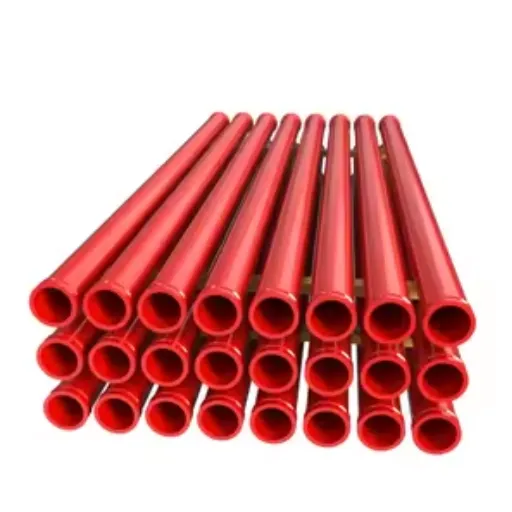
Key Benefits:
- Controlled Subaqueous Placement: It is a method of underwater placement of concrete, whereby the method of tremie concrete prevents contamination and washout of the concrete, ensuring its structural integrity.
- Increased Homogeneity: This method guarantees the mix homogeneity of the concrete with less chance of segregation with development of voids.
- Construction Execution in Difficult Conditions: Under difficult conditions of submerged or deep foundations, tremie concrete remains the choice method of construction when other methods fail due to the environment.
- Longevity and Durability: With just an adequate placement, tremie concrete is rated the best in the days to come for resistance to sulfate and chloride penetration.
- By the Standards: The method is judged fit by structural codes for reinforcing safety and dependability in critical foundation projects.
Enhanced Stability and Structural Integrity
Due to their excellent stability and structural integrity, tremie concretes provide a better option for difficult underwater and kind of deep foundation construction. This method prevents segregation and keeps the mix homogeneous by allowing the uninterrupted flow of concrete through a tremie pipe. More recent trends in concrete technology suggest that the addition of supplementary cementitious materials such as fly ash, silica fume, and slag improves the durability and mechanical properties of tremie concrete and also decreases its permeability and shrinkage.
From recent research data, it is evident that tremie concrete treated from an optimum placement situation can have compressive strengths exceeding 4000 psi (28 MPa), suitable for high-load applications. In addition, mixed controlled rheology prevents washout under submerged conditions, maintaining good adherence among materials and enhancing structural integrity. The method chooses the utmost effect in caissons, diaphragm walls, and bridge foundations, where structural stability is critically assessed to meet safety standards and design criteria for long-term performance.
Minimizing Contamination Risks
Strict protocols and working methodologies must be followed to minimize contamination risks during construction. Introducing foreign materials is prevented by using only clean and high-quality materials stored under proper conditions. Pre-construction testing for soil and water can detect any potential contamination and trigger a mitigation procedure. The use of barrier systems like geomembranes can segregate the construction sites from sensitive environments. Well-calibrated equipment that is regularly inspected will ensure that there is minimal leakage or spillage. Effective site management should complement the enforceable regulations that include controlled waste disposal, an HSE standard that helps assure compliance and environmental protection. Contamination risks can be kept to the barest minimum, thus ensuring both the structural and environmental integrity, through these and regular monitoring measures.
Efficiency in Deep Foundation Projects
Efficiency in deep foundation projects stems from modern technologies combined with optimized workflows and engineering specifications. This enhances the possibilities of completing everything quickly with greater drilling accuracy in the excavation and installation phases. Hydraulic rotary rigs, vibratory hammers, or Continuous Flight Auger drills are examples. Predicting soil behavior and arriving at work delays due to unexpected ground conditions is ensured when geotechnical analysis software is put into application.
Techniques of foundation prefabrication allow rapid assembly on-site and therefore shorten construction time. Further efficiency gains can be achieved by implementing real-time monitoring systems that can deliver critical information, such as from load testing and pile integrity testing, allowing real-time adjustments. Also, extensive project planning and cooperation among the involved parties streamline logistics and mitigate risks associated with the project, thereby contributing much toward efficiency in deep foundation operations.
Considerations for Using Tremie Concrete in Diaphragm Walls
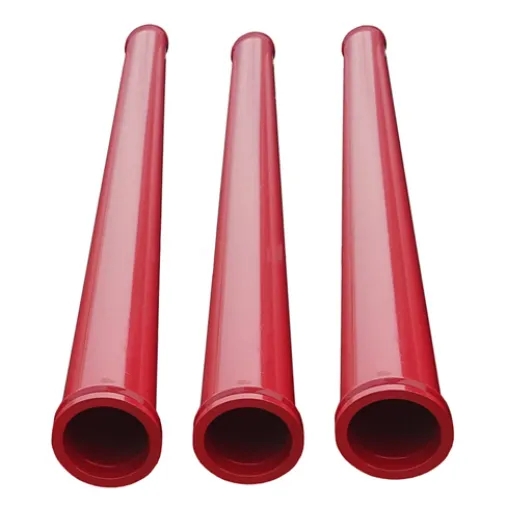
The more one has options in choosing tremie concrete, the more factors must be conscientiously taken into account in diaphragmatic wall construction to maintain structural integrity and performance. Mix design, the most critical aspect, must account for workability and cohesion of the mix to prevent proportions from segregation during placement. It must be slightly flowable over an extended period without excessive bleeding or even loss of consistency.
Equipment is of equal importance in relation to its preparation, as the tremie pipe should be set in good form, allowing the concrete to be placed freely and without interruption. The tip of the tremie pipe must be kept submerged in fresh concrete at all times to prevent contamination of concrete by bentonite slurry, which would otherwise negatively affect bonding and durability.
Additionally, real-time in-process quality control measures, such as conducting slump tests and sampling, ensure adherence to the requirements. The proper and complete removal of bentonite slurry and debris before concrete placement is yet another important factor, as any contamination can create defects in the structure upon completion.
Design Requirements
Only when these criteria are observed does a concrete placing system design meet structural integrity and performance standards.
- Structural Compliance: Materials must meet building codes and standards relevant to ensuring strength, durability, and resistance to differing environmental factors (for instance, ASTM, ACI). This applies to concrete mixes as well, which should possess adequate compressive strength and workability.
- Debris and Slurry Control: It is necessary to have prior arrangements for the removal of bentonite slurry and other impurities with specialized equipment, for instance, high-pressure cleaning systems, before laying down concrete. The absence of such contaminants avoids weak spots or failures in bonding within the resulting structure.
- Accuracy in Placement: The tremie pipe is to be kept fully embedded in the concrete during its entire placement to avoid any segregation or contamination of materials. The correct embedment allows uniform placement and proper curing.
- Testing and Quality Control: There should be testing of the concrete mix, including slump tests and analysis of samples, during the placement. Real-time monitoring enables consistency and adherence to design specifications.
- Environmental Considerations: The design must, therefore, implement measures against environmental pollution, such as the recycling of bentonite slurry and minimization of waste, so that construction may be considered sustainable.
Challenges and Solutions
Huge problems I face with contractors are consistency in materials and time with respect to variable site conditions. Hence, I insist on strict quality control procedures and detailed monitoring systems during execution. Environmental-impact aspects concern me a lot; hence, I try to work with sustainable solutions, from materials recycling to resource optimization. Adaptive problem-solving methods and clear communication are two good strategies that help me alleviate these challenges while accomplishing project goals.
Best Practices for Successful Implementation
Develop a Comprehensive Plan
The path to successful implementation begins with a well-thought-out, written plan with clearly defined objectives, timelines, resource allocation, and performance metrics. Establishing such a roadmap keeps all stakeholders aligned, diminishes ambiguity, and lays formal grounds to track progress.
Harness Technology and Automation
Use cutting-edge tools and software to monitor, analyze, and report things in real time. Use automation in repetitive processes to ensure accuracy, minimize human error, and increase operational efficiency, thus freeing the team for higher-priority tasks.
Cultivate Communication and Collaboration
Open, regular communication should flow freely among project teams, stakeholders, and clients. Collaborative networks are the backbone of frictionless information sharing, allowing for the early identification and resolution of potential problems.
Establish Risk Management Measures
Conduct risk assessments to identify the risks and challenges being experienced and generate mitigation strategies. Managing risks proactively allows opportunities to adapt in disruptive conditions while maintaining quality and deadlines within the projects.
Prioritize Training and Team Competence
Train the team members adequately so that they have the skills and knowledge required; a competent and knowledgeable team raises the overall productivity and ensures the use of good practices in execution.
Detailed planning, technology, communication, risk management, and training of an employee for preparedness are a few tools for ensuring project success. They contribute to efficiency and long-term sustainability, and resilience.
Reference Sources
“Flow of Tremie Concrete in Piles and Excavation Walls” (2019)
“Applications of Tremie Concrete in the Olmsted Dam” (2011)
“New Approach for Tremie Concrete Used for Deep Foundations” (2011)
Frequently Asked Questions (FAQs)
What is a concrete tremie, and how does it work?
The device commonly called a concrete tremie is used for concrete placement underwater or where the risk of segregation is present. It is ensured that the concrete is poured in a controlled manner to minimize blockage risk, with the workability of the concrete returning toward optimum during the pouring.
How does the thickness of the concrete tremie affect its performance?
Any concrete tremie thickness may affect concrete flow and placement. Having a thickness that prevents blockage, and to a certain extent aids in achieving compaction, will result in an efficient and effective placement of concrete at the desired ground level.
What are the benefits of using a concrete tremie for foundation works?
A concrete tremie has a number of benefits when being used in foundation working: It reduces the chances of contamination from surrounding materials; it keeps the concrete free from debris; and it increases concrete workability for gradual and uniform placement essential for structural integrity.
How do chemical admixtures enhance the workability of concrete for concrete in a tremie?
Chemical admixtures help improve the flow properties of concrete used in a tremie and make it highly workable. They impart self-compacting properties to concrete so that it can flow into voids and gaps without the need to be vibrated forcibly or compacted manually.
What considerations should be made by the concrete supplier when supplying concrete for tremie work?
Concrete supplies must possess the ability to meet judgment criteria for concrete required for use in any tremie operations, like proper mix design, workability, and resistance to segregation. It is worthwhile contemplating the addition of admixtures to increase flow and compaction characteristics, thereby ensuring that a concrete is suitable for placement under water.
How can I confirm the quality of concrete used in face tremie placement?
The quality of concrete used in a face tremie placement can be ensured by carrying out several tests for workability, such as slump testing, tests for compressive strength, and observations for segregation of the concrete sample during its placement on site, as well as during application or setting. These tests are to confirm the suitability of the particular mix for foundation work in terms of the required specification concerning strength and durability.
Blockage during the placement of concrete can be reduced by:
In order to prevent the blockage of concrete in tremie placement, concrete should flow continuously, and the tremie pipe should be kept clear of any debris. Using appropriate concrete mixes and suitable thickness also allows smooth placement with some interruptions.
Why is gradual placement important in a concrete tremie operation?
Gradual placement in the concrete tremie operation assists in better control of concrete flow and, therefore, uniform compaction. It reduces air entrappings or segregation and thus makes the concrete column strong and stable.
- Average Gas Station Profit: Understanding Gas Station Revenue and Owner Earnings
- Are Gas Stations Profitable? Understanding Gas Station Revenue and Profit Margins
- Is It Unhealthy To Live Next To A Gas Station?
- What Prevents the Fuel Pump Inside the Fuel Tank from Catching Gasoline on Fire
- Transforming the Smart Gas Station: Technology and Solutions for Modern Fueling
- Explosion Proof Lighting: Understanding Explosion Proof LED Lights for Hazardous Areas
- Do Gas Stations Make Money Off Gas? Understanding Profit Margins and Pricing
- New Gas Station Construction: Understanding Costs and Key Considerations


